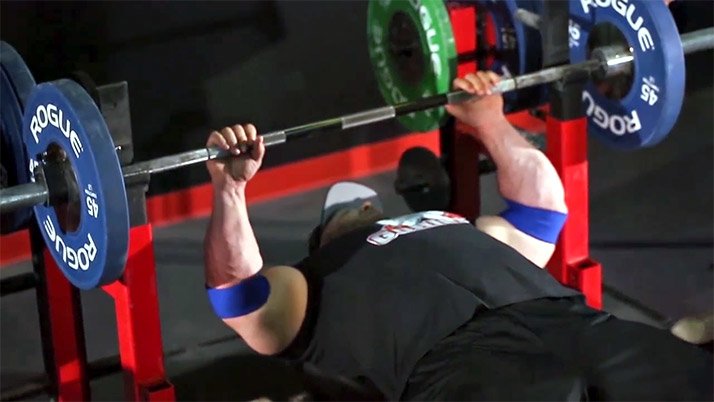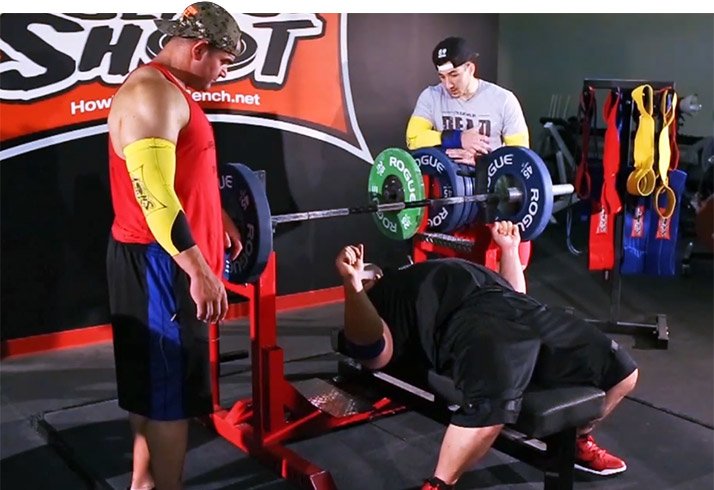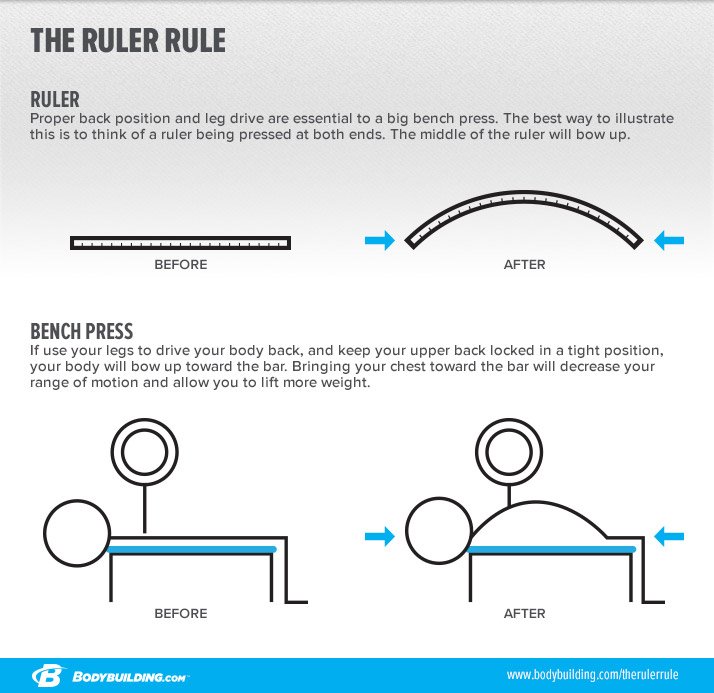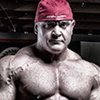
Finding Your Perfect Bench Press With Eric Spoto
Want to bench like a powerlifter? All-time raw bench press record holder Eric Spoto provides step-by-step instructions right here!
The bench press has an undeserved reputation of being a "low-tech" lift. Yeah, it seems simple enough to lie down and push a bar off your chest, but the bench press is actually a fairly technical exercise—and one that should be different for every person. There are a lot of things to think about, and if you're under enough weight, a lot of things that can go wrong.
If you want a big-ass bench, who could be a better teacher than the man with the heaviest raw bench of all time, Eric Spoto? Follow his cues about body positioning, tension, and pause training, and you'll quickly add more plates to the barbell and feel confident about moving them.
Eric Spoto How To Bench Like A Powerlifter
Watch the video - 15:38
Step 1 Find Your Leg Position
Despite what it may look like, the bench press is not an upper-body-only movement. Where you put your feet matters—a lot! If they're in the wrong place, you'll put yourself at a severe disadvantage from the start.
Spoto says you have two options: If you're flexible enough, bring your feet behind your knees, under your butt. If not, put your feet in front of your knees and press flat-footed.
Which one's better? "Whatever you're stronger at is going to have to be that position," says Spoto. "Either feet up, or feet back."
So you've set your feet, and your butt still launches off the bench when you press. What now? "You're going to find a spot where you just can't come up," Spoto explains. Here's how to find it:
- If you're a "feet back" lifter, experiment with moving your legs back toward the bar. Find the sweet spot where your feet are back far enough that you still have a lot of leg drive, but your hips feel locked to the bench.
- Spoto is a flat-footed lifter, so he can answer this from experience. "I had a problem with my ass coming up, so I moved my legs out until I found a spot where it didn't come up," he says.
Remember: There's a sweet spot where you have max leg drive, but your ass won't budge. That's what you need to find. And once you find it, lock your feet in and don't move them during the lift.
Step 2 Find Your Grip
Like with foot positioning, you're going to have to experiment until you find what feels best; it's not an exact science. Instead, consider it a rite of passage. And don't use a certain width just because Spotoor anyone else does it.

"You can't just copy anyone's grip," Spoto says. "It's going to be trial and error."
When you do find that grip, though, the next step is universal: Grip the bar, and grip the hell out of it. Spoto says to "make the bar bleed." This will help keep your wrists strong and tight.
Step 3 Coil Up
Spoto begins by setting his feet and his hands. Once they're in place, they never move. Then he lays down on the bench with his head so high it's actually off the top of the bench. From there, he "coils up," as he calls it, until his eyes are under the barbell and his body weight is placed on his traps.
To do it, start with your head off the top off the bench. Pull your body up toward the bar and then down. Your goal should be to pull your shoulders down toward your feet as far as possible, which forces your chest and lower back to arch upward toward the bar. "You can never have your chest too high," Spoto says.
Once you pull your shoulder blades together and down and bring your chest up, all of your weight should be on your traps and your feet. Your lower back shouldn't be touching the pad. Have your lifting partner check by sliding their hand—or maybe even their fist—under your lower back.

Step 4 Have Leg Drive From the Start
Leg drive isn't just what you use to power the bar off your chest. For Spoto, it's something he has from the moment he unracks the bar.
"A lot of people go from zero leg drive to 100, and their ass flies up," he says. "The second I unrack the bar, I'm at about 50 percent leg drive." Then, as the bar sinks, he incrementally adds tension—50, 60, 70, 80, 90—until he's at 100 percent leg drive at the bottom.
"I don't want to waste too much leg drive, so I'm not at 100 out of the gate," he says. "I do enough to stay completely tight."
Different coaches cue leg drive in different ways, but for Spoto it starts from the ground up. "The cue is driving my front toe through the sneaker. So it's basically doing a leg extension," he says.
Put it all together, and the arch you started with your lats will get even bigger. "If your upper body is locked down from your coil, and your leg is actively trying to extend, then your chest and back will have to arch," Spoto says. He compares it to pushing on both ends of a ruler: "If you push a wooden ruler, it's going to bow up."
Eric Spoto's Ruler Rule for Bench Pressing

Step 5 Tuck Your Elbows Just Enough
"Tucking" your elbows in as you lift is a good cue, but you can tuck too much. If your elbows come inside your hands, you're in a bad spot. As you move the bar down, keep your elbows tucked so they don't flare out to 90 degrees. You can get into a really weak position if you're not tight, so think about keeping your elbows tucked by engaging your lats.
If you keep your lats and shoulder blades tight, your elbows shouldn't be a problem. As you press up, your elbows are going to naturally flare out and up. You can actually feel them moving under the bar.
Maintaining a tight body and keeping your back engaged will cause the bar to move in a slight arch. This is a good thing. The bar should come down to the same spot on your chest every time, and then launch up to right above your eyes.
Why? Because of strength. "You are stronger locking out [over your eyes] than you are locking out [over your chest]," Spoto says.

Step 6 Practice Pausing
You can't talk about Eric Spoto without mentioning the "Spoto press." His namesake training technique involves pausing with the bar just an inch or so off of your chest, rather than letting it touch down. "I do the pause right before hitting the chest," he says.
To be clear, this is way, way harder than it sounds, so don't expect to do it with anything close to max weight. "You're basically doing the whole weight off your chest," Spoto explains. "Basically, making the movement harder."
However, once you get good at it, don't be surprised if all of the other cues here magically become second nature—and your bench strength goes through the roof. If you can Spoto press 300, benching 350 or more should be a breeze.
Your Set, Bro
Now it's time to take these cues and apply them to your lift. Remember that getting it right is going to take a lot of reps. You won't be perfect the first time you try. Spend a few weeks playing with your feet, hands, and upper-back placement. Practice coiling down the bench so your upper back is locked. Work on keeping your legs engaged and using them to press your upper body back up the bench like a ruler.
Keep adding weight as you get comfortable. Pretty soon, you'll have an entourage.
